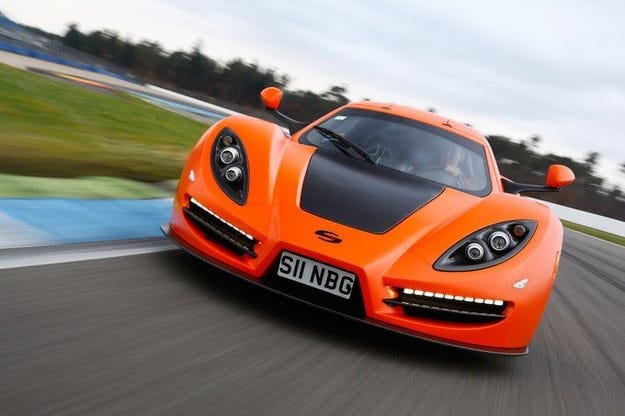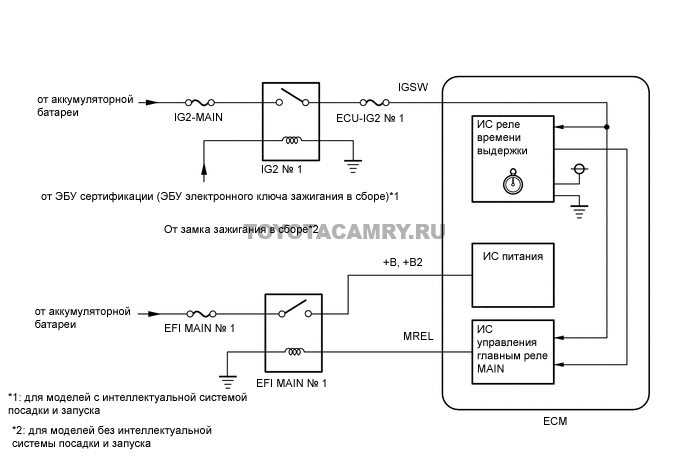
Test Drive Sin Cars Sin R1: Fathers and Sons

The name “Sin” should be associated with both the English word “sin” and the Bulgarian word “son,” said the father of the new sports brand, Rosen Daskalov. Unique first impressions of the new 1 HP Sin R450.
For a Western European, the question "What do Sofia B and Sin R1 have in common?" goes beyond the mystery of a million in Get Rich. Probably, only a few narrow specialists in the history of the countries of the former Eastern Bloc could know something about the Bulgarian sports car "Sofia B" and its exotic fiberglass body on the Zhiguli platform. But while, by Western European standards, the small series launched in the late 80s had little to do with the notion of a true sports car, the case of the Sin Cars Sin R1, which emerged three decades later, is very different. He again has Bulgarian roots, but his capabilities and ambitions are much more serious.
Our first meeting with Sin R1 and its creator Rosen Daskalov did not take place in Sofia, the capital of Bulgaria, which gave the name to the former social athlete, but in the small Bavarian town of Ludwigsmoos-Königsmoos, 25 km from Ingolstadt. “This will be our German office,” said the founder of Sin Cars.
Sin Cars Sin R1 is a serious athlete with Bulgarian roots
In the meantime, a pastoral idyll reigns at the address of the future representative office - at Ludwigstrasse 80 a small neat house built in the 60s is waiting for us, and behind the slightly creaking doors of the neighboring garage we expect to see a family tractor, typical for such cases, a modest muzzle.
Nothing like this! The workshop gives the face one would expect to see in front of a casino front in Monte Carlo or on Ocean Drive in Miami Beach. Muscular shapes, fast lines, vertically opening doors that go deep into the roof like a Ferrari LaFerrari, a distinctive Gumpert Apollo-style roof air intake, an aerodynamic rear end with a diffuser and a lid - a bright contrasting color combination of brights is exposed under a transparent carbon varnish. Undoubtedly an impressive sight, not only in terms of design, but also in terms of size and proportions. Against the background of Sin R1, some accomplished athletes would look completely ugly. With a length of 4,80 meters and a width of 2251 meters (8 mm with exterior mirrors), the Bulgarian debutant is larger than the Audi R10 V4440 plus (length / width - 1929/650 mm), as well as from the McLaren 4512S (1908/458 mm) and the Ferrari 4527 Italia (1937/1 mm). The question of performance comes up on its own in such close proximity to Audi's pedantry in Ingolstadt, but the car before us still doesn't have the ambition to be a model in this regard - it's the second Sin RXNUMX in history not yet released. prototyping phase.
Instead, he prefers to show us our old acquaintance. The raucous and unrestrained sound of starting a big V8 manages to completely wake us up, and micro-earthquake-like vibrations immediately betray the culprit of the morning stress of the senses. 6,2 liters, lower central camshaft and two valves per cylinder. In a word - the good old and invincible LS3 from Corvette. In R1, the GM unit reaches its maximum output of 450 hp. in combination with an exhaust system developed by Sin Cars. “A ready-to-install LS3 costs 6500 euros, while the price of an eight-cylinder biturbo engine from an M5 is about 25 euros,” Daskalov said as one of the obvious reasons for choosing this car.
Aspirated V8 with 450 hp
And thank God! All that was needed was one more biturbo... Like a strong sip of aged Trojan plum, the classic naturally aspirated V8 not only warms the acoustic atmosphere and the driver's soul, but also pulls strongly forward, like Stoichkov's previous attacks on the opponent's field. And for completeness, all this is accompanied by a sound no less classic metallic than the shifting six gears of a manual transmission, the work of the Italians from Graziano. Unlike Ferrari and Lamborghini, the Sin R1 still allows the driver to choose for himself - available as a semi-automatic version with steering wheel pads, as well as a classic version with a lever and an open console. At this point, the switch isn't quite smooth yet, but even that pairs perfectly with Sin R1's pleasantly unfiltered overall character.
The prototype path is also not 100% filtered. Aside from the steering wheel and its rather snug-fitting aluminum pedals, the R1 currently doesn't offer the driver any – electronic or otherwise – controls. If desired, ABS will be available later, which is currently being developed in collaboration with Bosch. As the one-arm wiper wrestles with the Bavarian rain, I try to get used to the action of the brakes. We must not forget that in addition to the non-ABS AP Racing braking system with six-piston calipers and 363 mm discs on all wheels, the prototype is shod in Michelin Pilot Sport Cup 2 half-images. situation. So I decided to be more gentle first. However, we have 271 kilometers of road between the city of Upper Bavaria and the Hockenheim circuit, where we traditionally get to know cars of this caliber in detail - the time for talking is about three hours. Well, the conversations in the R1's cabin on the highway are a bit like an attempt at an in-depth discussion in a techno club, but the clean mechanical sound of the centrally located engine a few inches behind us is also noteworthy. The only thing separating American V8 and OMP sports seats is a carbon fiber monocoque baffle, and I love that – that genuine roar is better than the newer, over-educated athletes.
The maximum speed of Sin R1 will reach 300 km / h.
Future production R1s will be able to reach up to 300 km / h. In the morning rush on the highway, the orange car briefly accelerated to the 250 km / h limit, leaving a very good impression with its surprisingly high driving comfort and calm following the direct path chosen by the driver.
Along with these impressions, I get an idea of the roots of the new project from the story of Rosen Daskalov, who was tightly tied to me with six-point harnesses. His interest in motorsport appeared early, and in his youth the Bulgarian was actively involved in karting competitions. The sport continues at a later stage, when the entrepreneur already has his own business - first racing on the track with a BMW M5 (E39), and later driving a modified Radical car.
Daskalov took a big step towards realizing his big dream of building his own sports model in September 2012 when he and his team of young engineers and designers started work on the R1. Further history seems to be developing rapidly - the first prototype of the R1 was presented in January 2013 at Autosport International in Birmingham, in July of the same year the model was presented at the Goodwood Festival of Speed, and in September 2013 the R1 received official homologation. to travel on the UK road network. The second prototype was shown at an exhibition in Birmingham last January, and in June the company traditionally participates in the Goodwood Festival of Speed, but with a new model. In parallel with this process, two racing versions with LS7 engines (seven-liter V8) were created, with which the founder of the company had a rather successful start in the British GT Cup Championship racing series in 2013 and 2014.
1296 kilograms with a full tank
“Regulatory requirements for civil homologation in the UK are much easier to implement and the market there has traditionally been interested in light-duty sports models,” said Daskalov, who relies on the collaboration of British specialists from ProFormance Metals to produce the complex tubular frame for the R1 chassis. Many of the body panels, as well as the skeletal passenger compartment, are made of carbon fiber reinforced composite material and are partly manufactured in the UK, partly in the Danube city of Ruse. It is expected that in the future the final assembly of production vehicles will be concentrated in a new workshop in Hinckley, Leicestershire.
The story behind both the prototypes and the racing Sin is certainly interesting, but all the time I wonder how much the R1 actually weighs? Sin Cars promises 1150 kg dead weight and as we arrive in Hockenheim in the meantime, my curiosity will soon be satisfied. We quickly fill the 100-litre tank and move on to the exact coarse weight that we use to determine the weight of all test vehicles. The front axle load is 528 kg, and the total weight with a full tank is 1296 kg - this means that the distribution between the front and rear axle is 40,7: 59,3% and the specific gravity is 2,9 kg / hp.
It remains to be seen what a car with such impressive parameters is capable of on a short track at the Hockenheim track. While the non-power steering is able to impress us on the first laps with its precise operation and precise feedback, the prototype R1's suspension settings are still too soft overall, and there is noticeable body movement during cornering. In slow corners, there is a slight tendency to understeer, which turns into a slight nervous reaction when the load changes in fast and tight turns. This is all perfectly normal considering that, unlike the production model scheduled for late 2015, the prototype does not have bridge stabilizers. We reserve the right to conduct an exhaustive and authoritative test with objective lap times at a later date when the adjustable suspension with Pushrod mechanism and Nitron dampers has been finalized by the manufacturer. “We already have very good, time-tested settings in the racing version of the model, which we are now adapting to the production version,” said the R1 creator.
The price of £145 is unbelievable!
The question of price remains. Daskalov, who has so far invested two million euros in the project, plans to start the base price of the sports model of Bulgarian, British and Bavarian origin from £145 - surprisingly low for a car with a full carbon body. Against this backdrop, you shouldn't look too much at details like the Audi TT air vents, the Mini's door handles, and the Opel Corsa's exterior mirrors. “It is extremely wrong to try to enter this segment with some utopian prices. After all, we don't want to alienate potential customers, but to inspire them with our product,” explains Rosen, who plans to sell up to 000 cars a year, with a smile on his face. It turns out that we have a person with a slightly different approach than the producers of most small series athletes, who often go into oblivion faster than the speed with which they appear in the world. It remains to wish Sin Cars Sin R100 not to remain "a miracle for three days", as the Bulgarians like to say "
Text: Christian Gebhard
Photo: Rosen Gargolov
